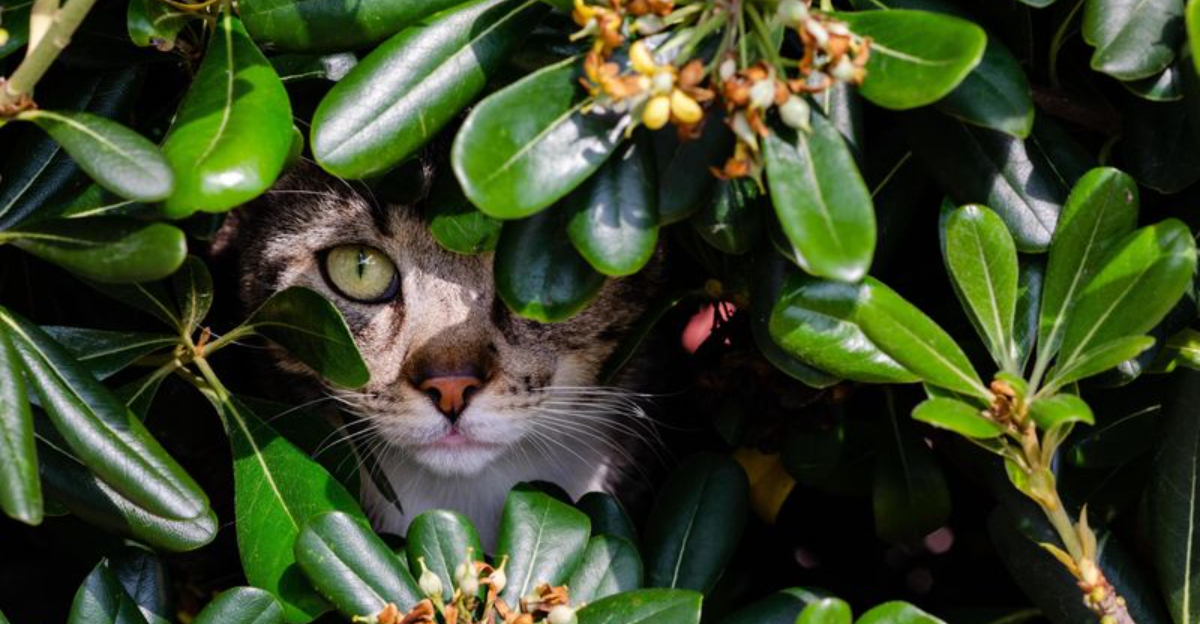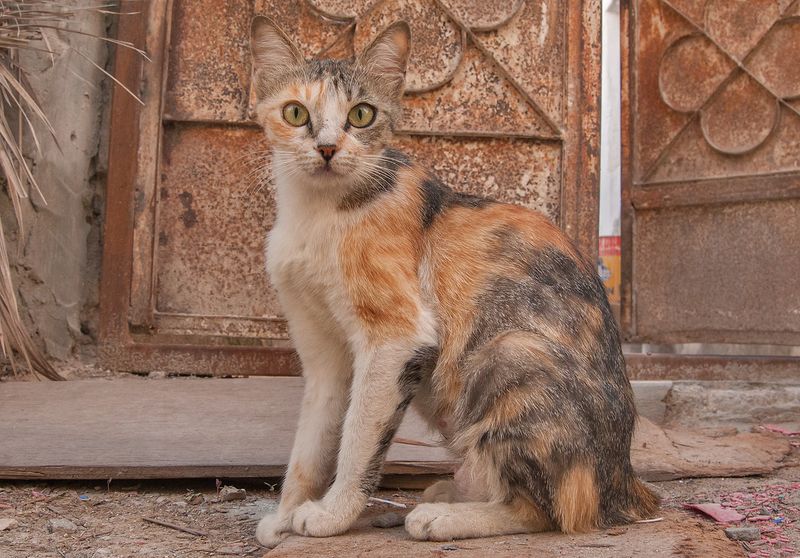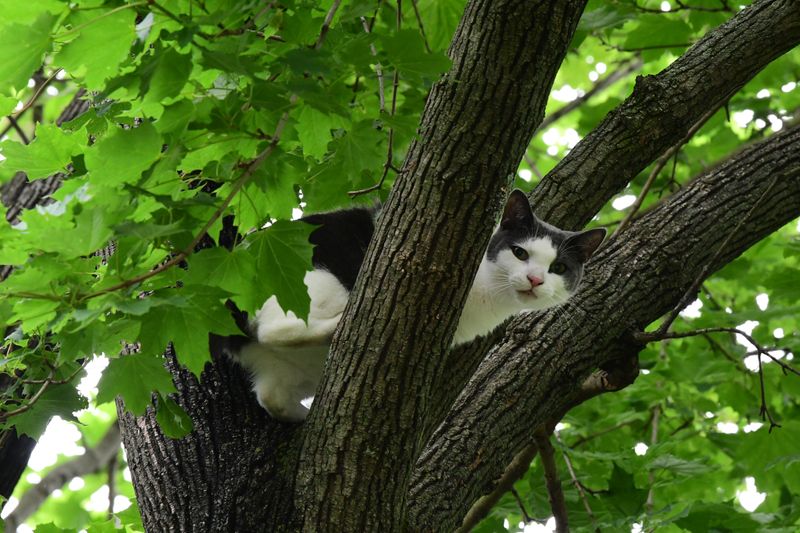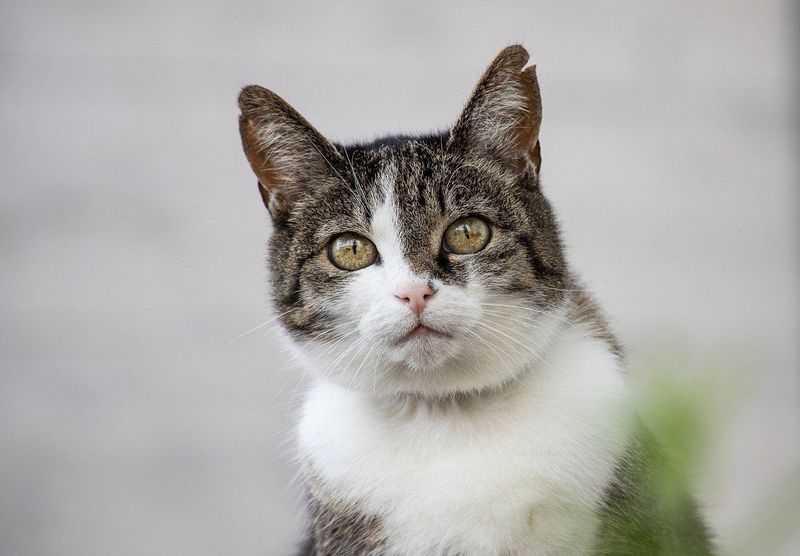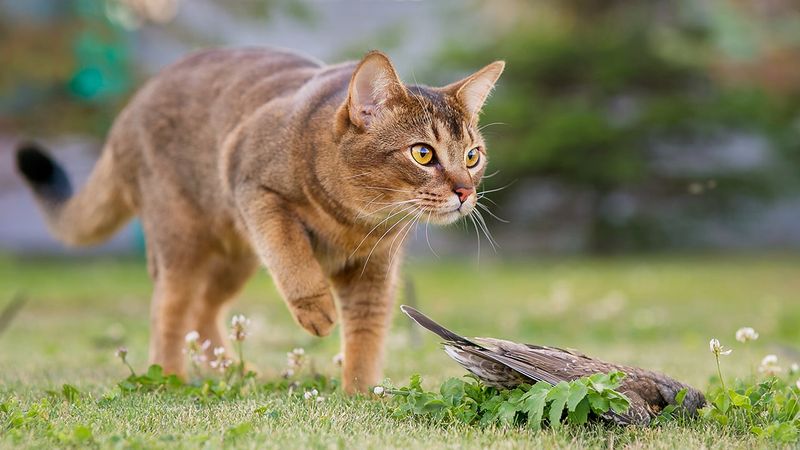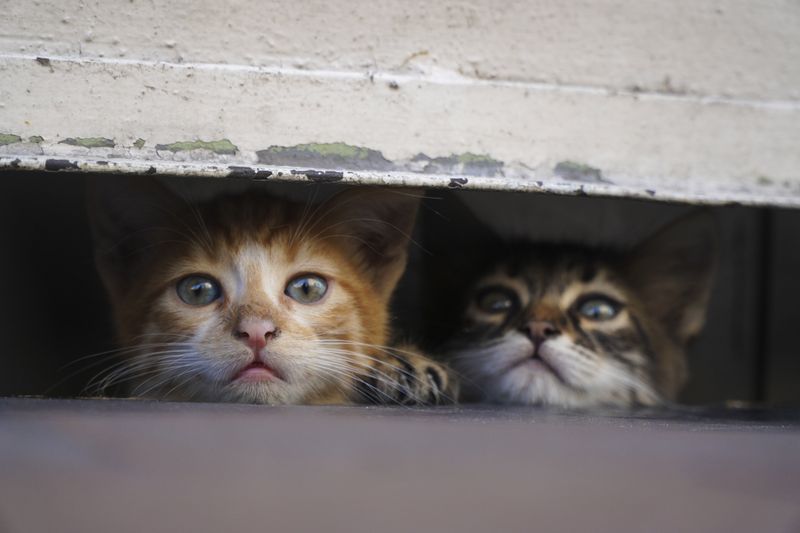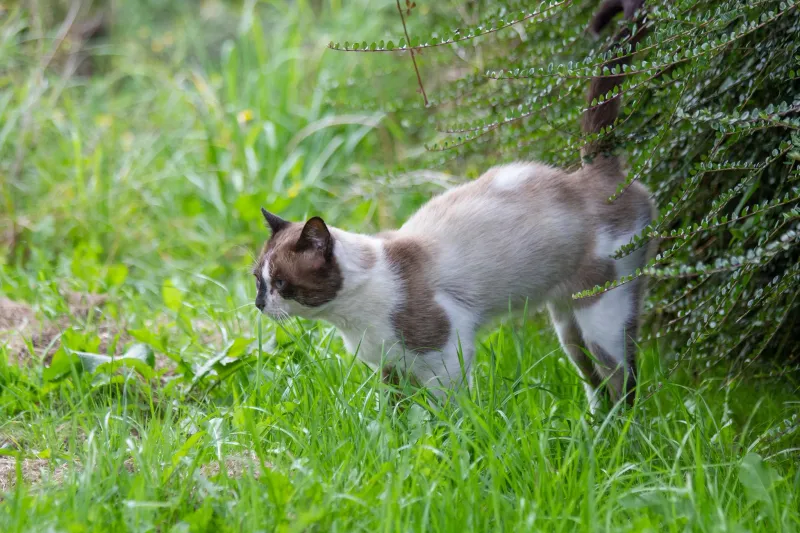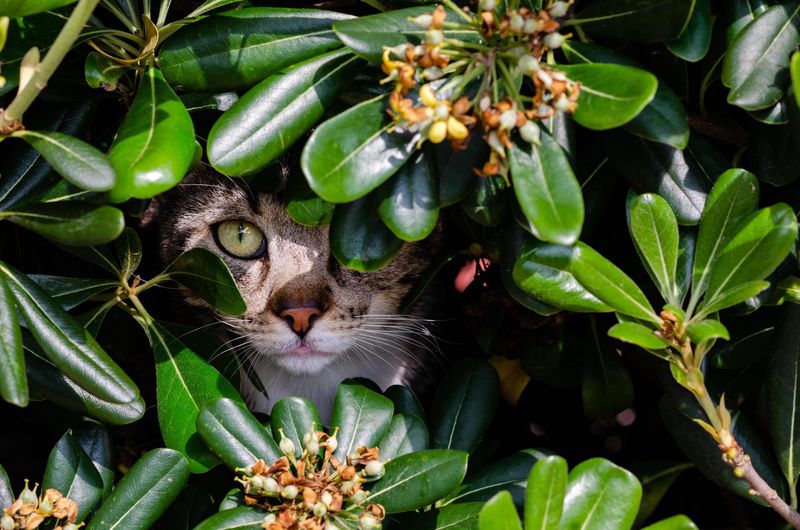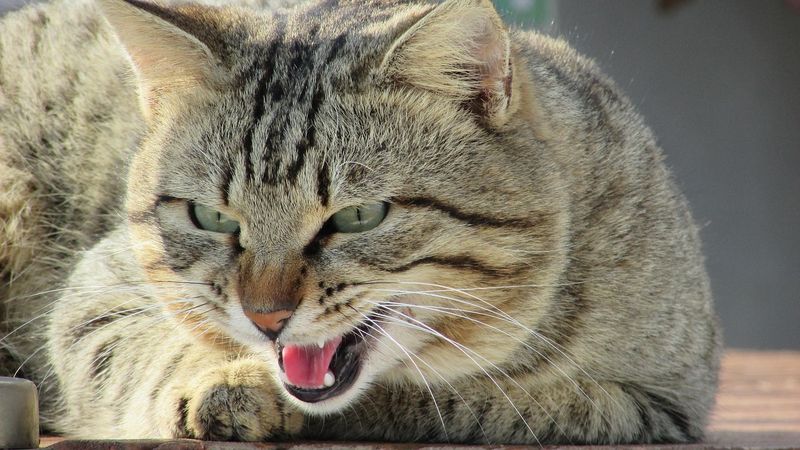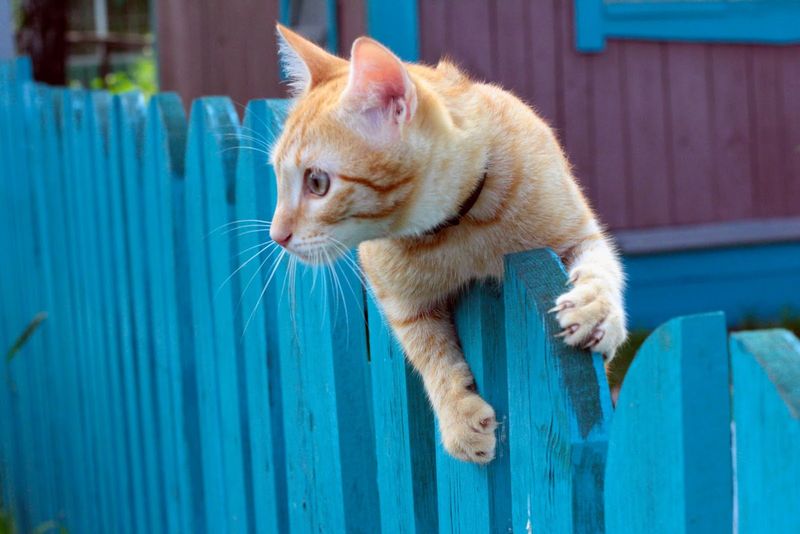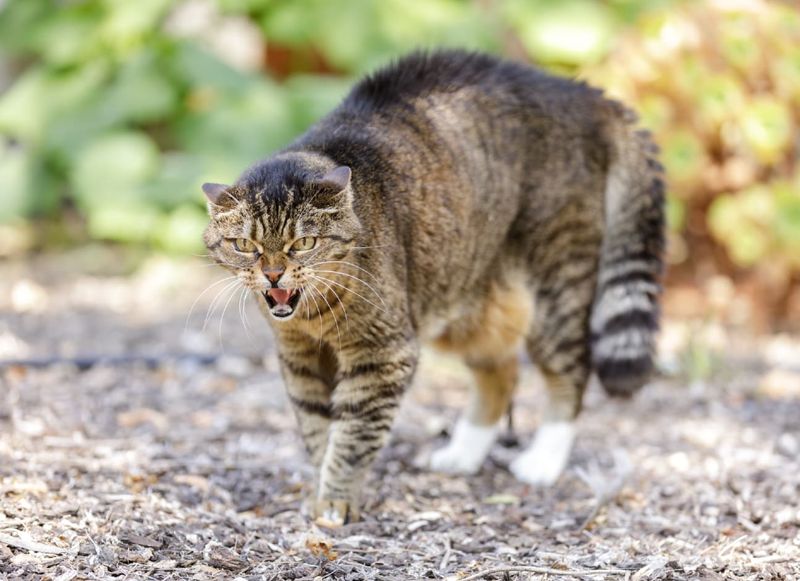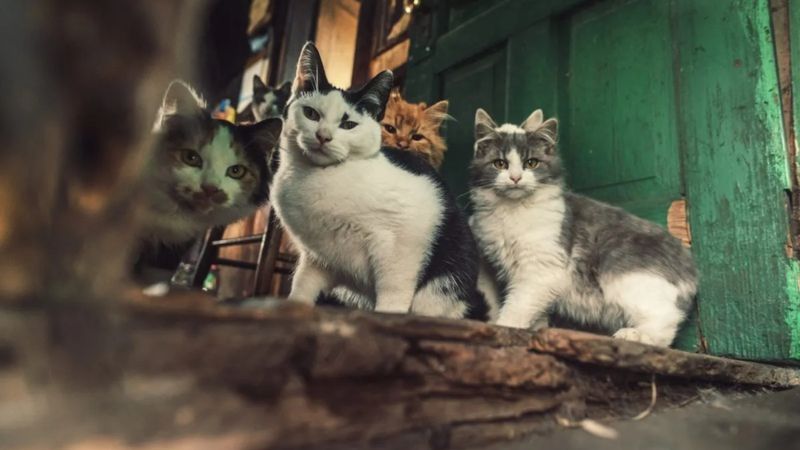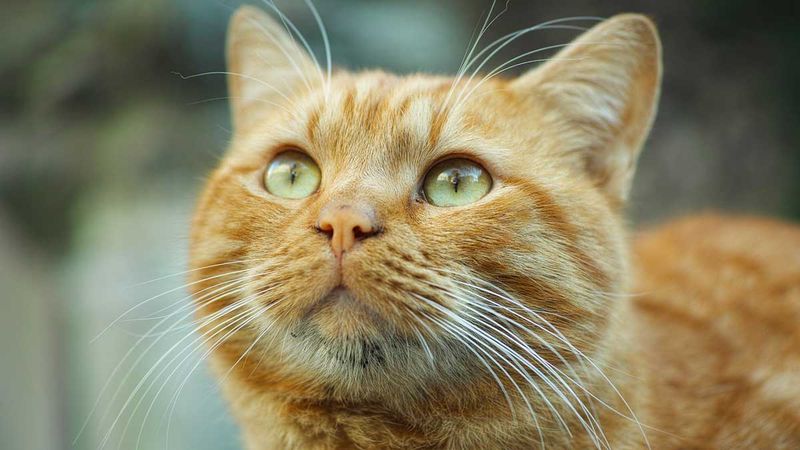📖 Table of Content:
- 1. Stealth and Camouflage
- 2. Climbing Trees and High Structures
- 3. Sharp Reflexes and Quick Reactions
- 4. Nocturnal Activity
- 5. Acute Hearing and Smell
- 6. Silent Movement
- 7. Speed and Agility
- 8. Hiding in Small Spaces
- 9. Territorial Awareness
- 10. Using Cover for Protection
- 11. Fierce Defensive Tactics
- 12. Avoiding Open Spaces
- 13. Mimicking Larger Predators
- 14. Group Living for Protection
- 15. Learning from Experience
Outdoor cats have an impressive ability to navigate their surroundings and evade predators. Their survival depends on a mix of instinct, experience, and natural adaptations. These skills help them remain alert and react swiftly to potential threats.
By honing their senses and learning from their environment, outdoor cats develop effective survival strategies. Whether they use stealth to stay hidden or climb to escape danger, their agility and intelligence play a crucial role. Each of these tactics increases their chances of survival in unpredictable outdoor conditions.
From silent movement to forming loose groups for protection, these behaviors showcase their resourcefulness. Understanding these survival strategies offers insight into how outdoor cats manage to thrive despite constant challenges.
1. Stealth and Camouflage
Blending into their surroundings is one of the most effective ways outdoor cats avoid predators. Their fur colors often match natural environments like grass, dirt, or shadows, making them harder to spot. They also move silently, using their padded paws to avoid making noise. This ability helps them sneak past threats without drawing attention. Staying hidden is often their first line of defense.
2. Climbing Trees and High Structures
Scaling trees, fences, and rooftops provides a quick escape route from ground-based dangers. Strong hind legs and sharp claws allow for fast, efficient climbing. Once perched above, they gain a vantage point to observe potential threats from a safe distance. Remaining at a height also helps them avoid confrontations with larger animals. If needed, they can leap between structures or climb higher to stay out of reach. Aerial movement is a vital skill that keeps them safe from many predators. Choosing high ground is an instinctual survival move.
3. Sharp Reflexes and Quick Reactions
Reacting in an instant can mean the difference between life and death. When startled, an outdoor feline can jump, twist, or sprint away in the blink of an eye. A flexible spine allows for swift directional changes, making it difficult for a pursuer to keep up. In mid-air, they can adjust their position to ensure a safe landing. These natural reflexes are also useful when catching prey or dodging an unexpected threat. Even a simple tail flick can help maintain balance during rapid movement. Quick instincts keep them one step ahead of danger.
4. Nocturnal Activity
Taking advantage of the night helps reduce encounters with certain predators. Many large threats, such as hawks and humans, are less active after dark. Superior night vision allows for confident navigation through low-light conditions. Hunting at night provides an additional advantage, as many small prey animals are active during these hours. Cool temperatures make movement more comfortable compared to the heat of the day. A preference for darkness keeps them hidden and increases their chances of survival. Adapting to a nocturnal schedule is an effective way to avoid danger.
5. Acute Hearing and Smell
Detecting danger before it gets too close is essential for survival. Highly sensitive ears pick up even the faintest movements, from rustling leaves to distant footsteps. A powerful sense of smell helps identify both threats and familiar scents. This heightened awareness provides an early warning system, allowing for a quick escape. Whiskers also contribute to their perception, detecting shifts in air movement and vibrations. Even in total darkness, they rely on these senses to navigate safely. Recognizing danger before it strikes gives them a critical advantage.
6. Silent Movement
Gliding through their surroundings without a sound allows for both stealth and safety. Soft paw pads reduce noise while walking, making it easier to move undetected. Careful foot placement ensures that dry leaves and twigs don’t give away their position. This quiet approach helps in stalking prey as well as avoiding confrontation. Even when running, light landings help minimize the sound of footsteps. A silent hunter is also a silent escape artist. Minimizing noise keeps them invisible to both threats and targets.
7. Speed and Agility
Dashing away from danger is a crucial survival skill. Reaching speeds of up to 30 mph (48 km/h), they can outrun many predators over short distances. Quick turns and sudden leaps make them difficult to chase in tight spaces. Using bursts of speed, they can quickly escape an ambush before a predator has time to react. Strong, flexible muscles allow them to spring forward instantly when necessary. A well-timed jump can propel them to safety before an attacker gets too close. Fast reflexes and explosive energy make fleeing an effective defense.
8. Hiding in Small Spaces
Squeezing into narrow spaces provides a secure place to evade threats. Tight hiding spots prevent larger predators from reaching them. Under porches, inside hollow logs, or deep within dense bushes, they remain invisible. A well-chosen hiding spot serves as both a resting place and a refuge from danger. Even when sleeping, they instinctively choose areas with protective cover. Keeping multiple hiding places within their territory ensures a safe retreat at any moment. Survival often depends on disappearing when needed.
9. Territorial Awareness
Memorizing the safest paths and escape routes is a natural instinct. By carefully mapping their surroundings, they know where to go in case of an emergency. Familiarity with their environment helps them navigate through risky areas while avoiding danger. Regularly patrolling their territory keeps them aware of any changes or new threats. Marking boundaries also discourages intrusions from other animals. Knowing which locations provide cover and which pose a risk is essential. A strong sense of territory is key to long-term survival.
10. Using Cover for Protection
Staying near cover reduces the risk of being spotted by predators. Moving between bushes, cars, fences, and trees provides a layer of concealment. If danger appears, they can quickly duck behind an object to stay out of sight. When stalking prey, they take advantage of shadows and obstacles to remain undetected. Keeping close to walls and natural barriers ensures they are never fully exposed. Even in open spaces, they instinctively look for the nearest hiding spot. Using the environment wisely helps avoid unnecessary risks.
11. Fierce Defensive Tactics
Fighting back becomes necessary when escape is not an option. Arching the back, raising fur, and hissing create the illusion of being larger. Sharp claws and strong bites inflict serious damage on attackers. Many predators hesitate when faced with a ferocious and determined opponent. Defensive displays often serve as a warning before a physical confrontation occurs. A well-aimed swipe can send an aggressor retreating. Standing ground when cornered increases the chances of survival.
12. Avoiding Open Spaces
Keeping away from wide, exposed areas helps minimize vulnerability. Open fields leave them susceptible to aerial predators like hawks and owls. Sticking to paths with natural cover provides an extra layer of security. If they must cross an open space, they do so quickly and cautiously. Remaining low to the ground further reduces visibility. Seeking out shaded areas or structures allows for safer navigation. Reducing exposure is a simple but effective way to stay protected.
13. Mimicking Larger Predators
Creating the illusion of size can deter potential attackers. Raising fur, arching the back, and widening the eyes make them appear more formidable. Deep growls and intimidating stares further enhance the effect. Some even adopt aggressive postures similar to larger predators, fooling their opponent into retreating. This behavior often discourages threats without the need for physical confrontation. A well-timed display of dominance can prevent a fight altogether. Looking bigger and fiercer tricks predators into thinking twice.
14. Group Living for Protection
Banding together increases the chances of survival. While naturally solitary, some outdoor felines form loose colonies for added security. A group is more intimidating to predators than an individual. By watching one another’s backs, they alert the group to approaching danger. Young and inexperienced members benefit from the knowledge of older ones. Defending a shared territory as a unit strengthens their safety. There is power in numbers when it comes to survival.
15. Learning from Experience
Adapting to past encounters makes future survival more likely. After escaping a dangerous situation, adjustments are made to avoid repeating mistakes. Locations with high risk are avoided, and safer paths are chosen instead. Observation of other animals provides additional learning opportunities. Younger individuals develop survival skills by mimicking experienced ones. Trial and error refine their instincts over time. Every encounter shapes their ability to navigate the world safely.
